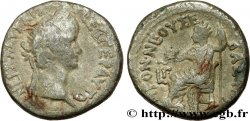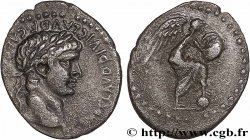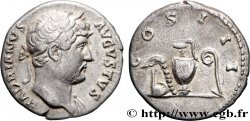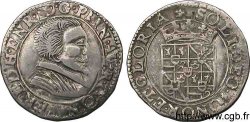v16_0478 - NERONE Tétradrachme syro-phénicien
MONNAIES 16 (2002)
Начальная цена : 350.00 €
Назначить цену : 600.00 €
Цена реализации : 427.00 €
Количество ставок : 3
Максимальная предлагаемая цена : 610.00 €
Начальная цена : 350.00 €
Назначить цену : 600.00 €
Цена реализации : 427.00 €
Количество ставок : 3
Максимальная предлагаемая цена : 610.00 €
Тип Tétradrachme syro-phénicien
Дата: an 8/ 110
Монетный двор / Город: Antioche, Syrie, Séleucie et Piérie
Металл: silver
Диаметр: 24 mm
Ориентация осей монеты: 12 h.
Вес: 15,18 g.
Комментарии о состоянии
Remarquable portrait de l’empereur jeune et mince, sur un grand flan ovale, bien disposé. Léger tréflage au revers et faiblesse sur la poitrine de l’aigle
Ссылки в каталоге: :
Происхождение:
Cet exemplaire est le 0082_104 de la base TSP
Лицевая сторона
Аверс: описание: Buste lauré de Néron jeune à droite avec l'égide sur le cou (O*4).
Аверс: легенда: NERWNOS KAISAROS - SEBASTOU, (Nerwnws Kaisaros Sebastou)
Аверс: перевод: (Néron césar auguste).
Обратная сторона
Реверс: Описание: Aigle debout à gauche sur un foudre ailé, les ailes déployées ; dans le champ à gauche, une palme verticale.
Реверс: легенда: H/ IR
Реверс: перевод: (8 / 110).
Комментарий
Exemplaire particulièrement joli et de flan large de ce type que l’on trouve habituellement en très mauvais état. Michel Prieur a répertorié 66 exemplaires pour cette année. Les auteurs du Roman Imperial Coinage signalent l'existence de 20 coins de droit. Il y avait 18 pièces de ce type dans le trésor de Tiberias. L'an 110 appartient à l'ère césarienne. L'importance des émissions est liée à la campagne parthique de Corbulon.
A particularly fine example of this type, with a wide flan, which is usually found in very poor condition. Michel Prieur listed 66 examples for this year. The authors of the Roman Imperial Coinage report the existence of 20 obverse dies. There were 18 coins of this type in the Tiberias treasury. The year 110 belongs to the Caesarean era. The importance of the issues is linked to Corbulo's Parthian campaign.
A particularly fine example of this type, with a wide flan, which is usually found in very poor condition. Michel Prieur listed 66 examples for this year. The authors of the Roman Imperial Coinage report the existence of 20 obverse dies. There were 18 coins of this type in the Tiberias treasury. The year 110 belongs to the Caesarean era. The importance of the issues is linked to Corbulo's Parthian campaign.








 Cообщить об ошибке
Cообщить об ошибке Распечатать страницу
Распечатать страницу Отправить мой выбор
Отправить мой выбор Задать вопрос
Задать вопрос Consign / sell
Consign / sell
 Информация
Информация















